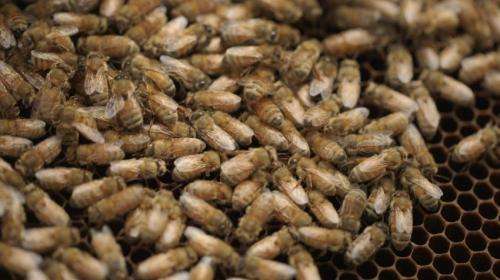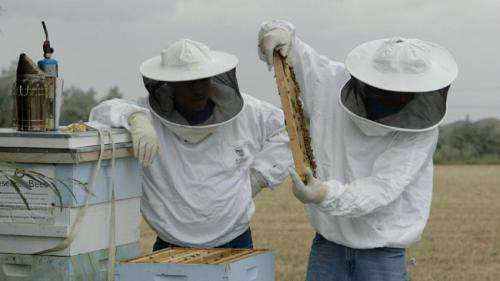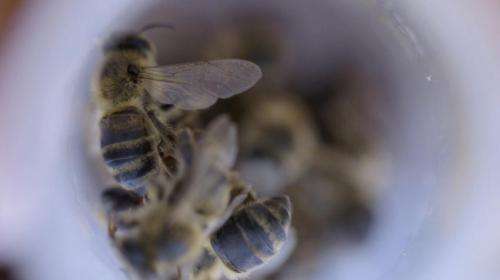Using microscopic bugs to save the bees

For decades, honeybees have been battling a deadly disease that kills off their babies (larvae) and leads to hive collapse. It's called American Foulbrood and its effects are so devastating and infectious, it often requires infected hives to be burned to the ground.
Treating Foulbrood is complicated because the disease can evolve to resist antibiotics and other chemical treatments. Losing entire hives not only disrupts the honey industry, but reduces the number of bees for pollinating plants.
Now an undergraduate student at BYU, funded by ORCA grants, has produced a natural way to eliminate the scourge, and it's working: Using tiny killer bugs known as phages to protect baby bees from infection.
"Phages are the most abundant life form on the planet and each phage has a unique bacteria that it will attack," said Sandra Burnett, BYU professor of microbiology and molecular biology. "This makes phage an ideal treatment for bacterial disease because it can target specific bacteria while leaving all other cells alone."
Although phages are plentiful in nature, finding the perfect phage for the job takes a lot of hunting. That's where student Bryan Merrill comes in.
Merrill has been researching ways to treat American Foulbrood since joining a "Phage Hunters" class his freshman year at BYU. Merrill loved the class, which introduced him to the process of phage identification, and so he approached Burnett with hopes of researching treatment for the disease under her tutelage.

"This bacteria has been a problem in honeybees for a long time," Merrill said. "It infects the larva when they're teeny tiny. Even a few spores will infect and they'll start eating the larva from the inside out. It doesn't hurt the adult bees, but all of the sudden the bees can't replenish the population and the hive just collapses."
When hives are infected, beekeepers generally treat their hives with antibiotics. However, this is usually only a temporary solution. If the bacteria returns, it will most likely develop to be resistant to the antibiotics. From there, bee owners have the option to burn the hive or try phage treatment.
"Phage is a great alternative to antibiotics, and it's a natural alternative because phages exist in nature on their own," Burnett said. "And just the nature of a phage itself is that it's self-replicating at the expense of the bacteria. It multiplies itself so there are more of them to hunt down the bacteria. Then as soon as the host is gone, the phage just disappears."

Once they identify the perfect phage, Burnett, Merrill and other students replicate it in the lab so it can be applied to the hive with a sugar-water solution. Like a virus, the phage get to work infecting the harmful bacteria until it is gone.
After a lot of gene sequencing and analyzing, Merrill has identified five phage candidates for honeybee treatment, cleverly named after former BYU basketball stars (Abouo, Davies, Emery, Jimmer1 & Jimmer2). His findings appear in a recent issue of high ranking biotechnology journal BMC Genomics.
Journal information: BMC Genomics
Provided by Brigham Young University
















